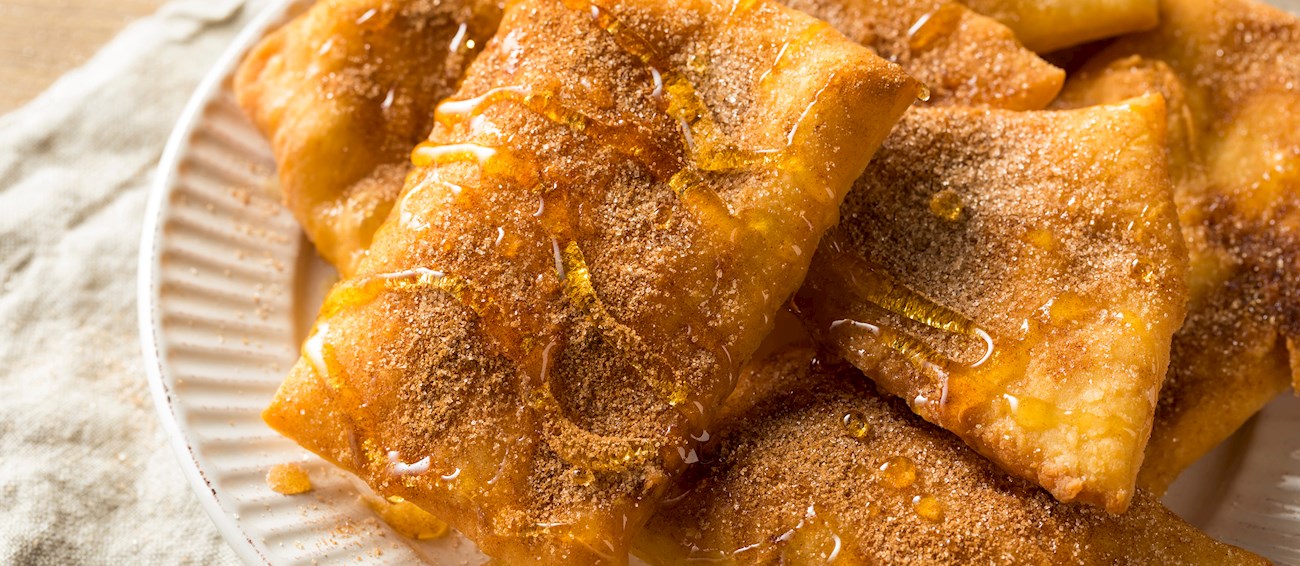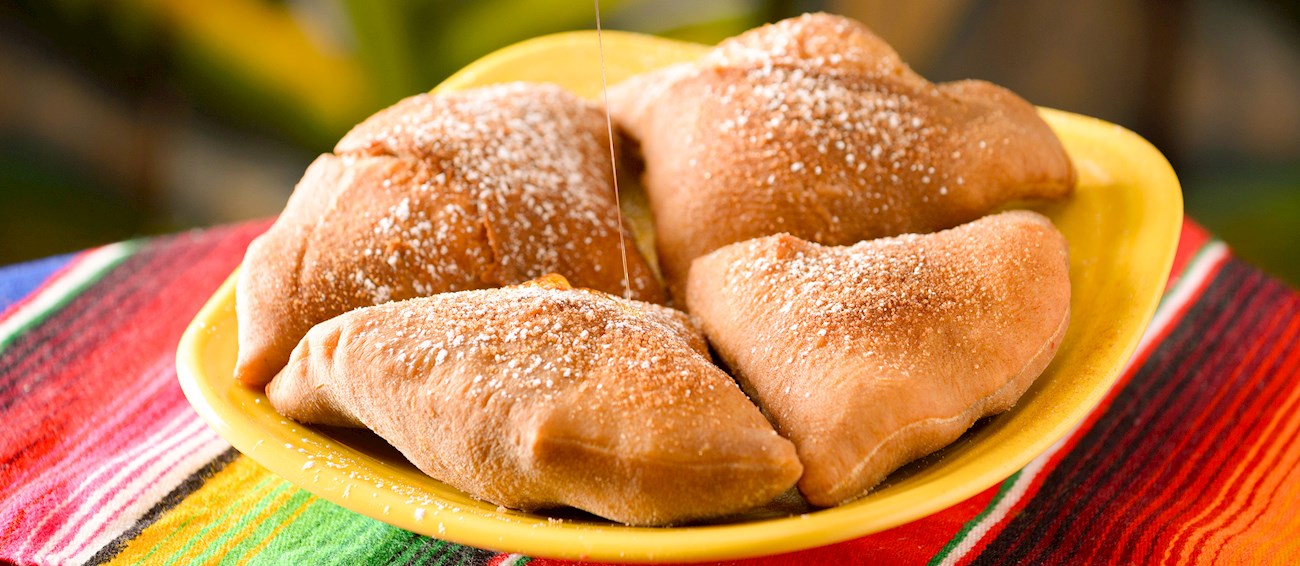Sopapillas
Sopapillas, a beloved icon of New Mexican cuisine, are golden, puffed pillows of fried dough that capture the essence of the region’s rich cultural tapestry—blending Native American, Spanish, and Mexican culinary traditions into one irresistible creation.
Though variations of fried bread exist across the Americas, the sopapilla as it’s known in New Mexico holds a special place in the hearts (and on the tables) of locals, often served warm with honey or used as a vessel for savory fillings. The dough is typically made from a simple mix of flour, baking powder, salt, and fat—usually shortening or lard—with a bit of warm water to bring it together.
Rolled out and cut into squares or triangles, the pieces are then fried until they puff dramatically, forming a hollow interior and a crisp, golden crust. Read more
The result is a pastry that is simultaneously airy and indulgent, with a slightly chewy bite and a neutral flavor profile that lends itself to both sweet and savory applications. In its most iconic form, the New Mexican sopapilla is served as a dessert, freshly fried and drizzled with local honey, sometimes dusted with powdered sugar or cinnamon.
That simple combination—hot, crispy dough and sweet, floral honey—creates a nostalgic treat that’s both comforting and deeply rooted in regional tradition. In fact, in many traditional New Mexican restaurants, sopapillas are brought to the table at the end of the meal, complimentary and bottomless, a cherished ritual that reflects the hospitality and generosity of local food culture.
Yet sopapillas are not limited to dessert. In New Mexico, they are also served savory, especially when split open and stuffed with meats, beans, cheese, or green and red chile—essentially transforming the pastry into a pocket-style meal reminiscent of a stuffed taco or burrito.
This savory variation showcases the sopapilla’s versatility and its seamless integration into the broader New Mexican culinary landscape, where the bold, smoky flavors of roasted chiles and slow-cooked meats reign supreme. Though similar to Navajo fry bread, New Mexican sopapillas are generally lighter, puffier, and more structured, thanks to the use of leavening agents and precise dough handling.
The dish’s roots are thought to trace back to the Spanish colonists of the 16th and 17th centuries, who brought their knowledge of wheat-based pastries to the Americas, merging it with Indigenous cooking techniques to create something entirely new.
In essence, New Mexican sopapillas are more than just fried dough—they are a culinary symbol of the Southwest, beloved for their comforting texture, simple preparation, and deep cultural heritage. Whether served sweet with honey or savory with chile and cheese, they remain a timeless expression of New Mexico’s diverse and delicious food identity.





